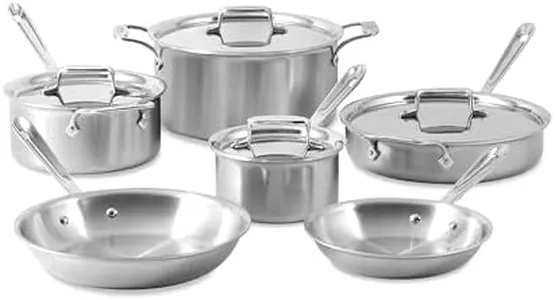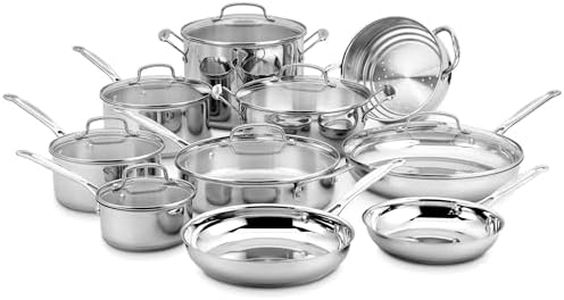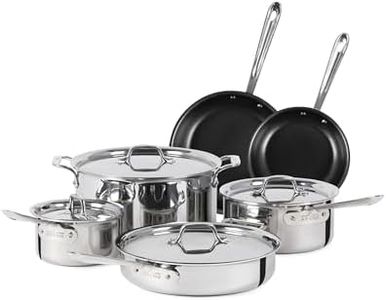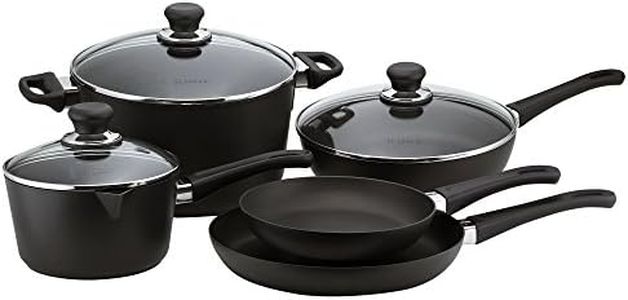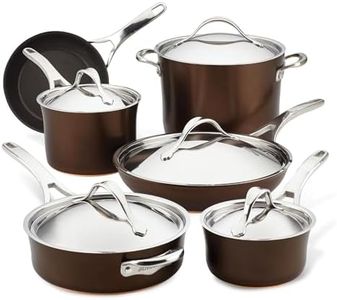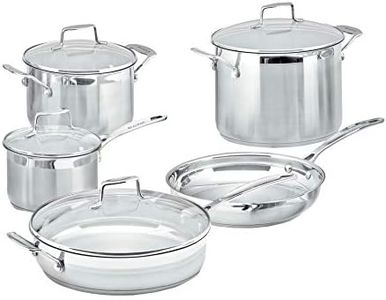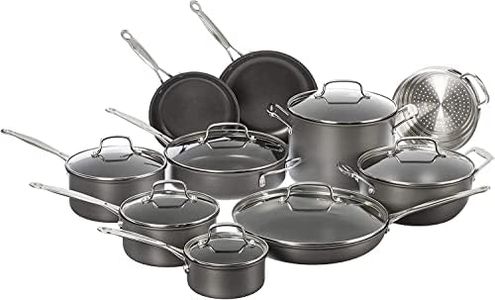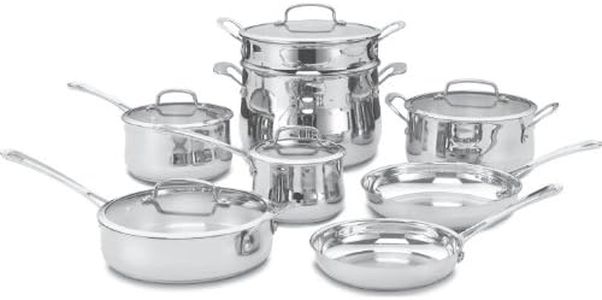We Use CookiesWe use cookies to enhance the security, performance,
functionality and for analytical and promotional activities. By continuing to browse this site you
are agreeing to our privacy policy
10 Best Pot And Pan Sets
From leading brands and best sellers available on the web.Buying Guide for the Best Pot And Pan Sets
Choosing the right pot and pan set can make cooking easier, more enjoyable, and even help your food come out better. Think about what kinds of meals you like to prepare, how often you cook, and what type of stove you have. Consider the weight and feel of the pieces, how easy they are to clean, and whether they can go in the oven or dishwasher. Picking a set that suits your cooking style, kitchen space, and maintenance preferences will make your investment worthwhile and long-lasting.MaterialThe material of pots and pans affects how they heat, how easy they are to clean, and how durable they are. Common materials include stainless steel, nonstick coatings, aluminum, copper, and cast iron. Stainless steel is durable and resistant to rust, but not always nonstick. Nonstick surfaces are easy to clean and great for delicate foods, but can wear down over time. Aluminum heats quickly and is lightweight, though it may dent more easily. Copper gives fast, even heating but often needs special care. Cast iron holds heat well and can be very durable, although it's usually heavy and needs seasoning. Choose based on your cooking habits: if you like low-fat cooking or easy cleanup, nonstick might be best; if you want durability and use metal utensils, stainless steel is ideal.
Number and Types of PiecesSets come in different sizes, typically ranging from basic (around 5 pieces) to more complete collections (10-15 pieces or more). Basic sets usually cover essential cooking needs with a few saucepans, a skillet, and a stockpot. Larger sets include specialty pans, multiple lids, utensils, or steamer inserts. If you cook a wide variety of dishes, a bigger set might be helpful, but if you have limited storage or mainly cook simple meals, a smaller set could be more practical. Think about what you actually cook and pick a set with the types and sizes of pots and pans you’ll regularly use.
Heat CompatibilityNot all pots and pans work on every stovetop. Check if the set is compatible with your cooktop: induction requires magnetic materials, while gas and electric stoves are generally more flexible. Some handles and lids aren’t oven-safe or withstand only certain temperatures. If you need to transfer pans from stovetop to oven, or if you use an induction stove, be sure to choose a set that mentions this compatibility.
Ease of CleaningHow easy it is to clean your pots and pans can make a big difference in daily use. Nonstick and ceramic coatings usually wash up easily, while stainless steel and cast iron may need more scrubbing or special care. Some sets are dishwasher safe, while others should only be washed by hand to last longer. If you prefer quick and simple cleanup, look for dishwasher safe or nonstick options. If you don’t mind more thorough care, stainless steel or cast iron can reward you with extra durability and performance.
Weight and HandlingThe weight of pots and pans affects how easy they are to lift, pour, and move around your kitchen. Cast iron and some stainless steel pans can be quite heavy, which can be more stable but harder to handle, especially when full. Aluminum and nonstick pieces are usually lighter. If you have difficulty lifting heavy objects or cook for one or two people, lighter options may be better. People looking for long heat retention and sturdiness might prefer heavier pots and pans.
Lid and Handle DesignLids and handles affect both convenience and safety. Handles should be comfortable to grip and stay cool to the touch. Some sets have lids made from glass (good for checking your food) or metal (better for oven use). If you do a lot of simmering, glass lids let you see inside without lifting the lid and releasing heat. For oven use, make sure lids and handles are oven-safe. Think about how you use lids in your everyday cooking and whether handle comfort matters to you.
